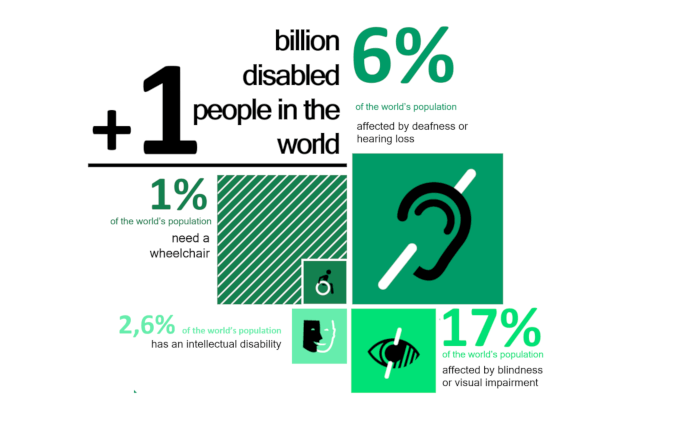The United Nations Secretary-General António Guterres said that coronavirus pandemic is intensifying inequalities of the world and almost one billion people with disabilities are hard hit by the crisis. Guterres said this on Wednesday calling for disability-inclusive recovery and response to the crisis stressing on equal access of COVID-19 treatment for the disabled. This section is already in poverty and exposed to higher rates of violence, neglect and abuse, even in normal situations, reports United Nations.
A UN report said that almost 15 percent of the world's populations are with disabilities, while 46 percent of the global populations are older than 60. Further, he noted that if COVID-19 attacks the disabled, it would often result in severe infection, increasing their chances of dying. The elderly and disables living in care homes and similar institutions are more vulnerable as their reach to good health care, hygiene and social distancing are less.
Care home deaths

"The share of COVID-19 related deaths in care homes - where older people with disabilities are overrepresented - ranges from 19 per cent to an astonishing 72 per cent," Guterres said. Decisions on health care rationing are often done with discriminatory criteria, such as age and quality/value of life, based on disability. The UN head called for discontinuing such practices.
Unemployment, domestic violence and invisible disability
Those faced with the economic crisis caused by the pandemic are more likely to become unemployed while experiencing great difficulty to return to work. However, not more than 30 percent of those with significant disabilities have access to benefits. But disabled in low-income countries, the number comes down to merely one percent.

Especially there is a surge of domestic violence on disabled women and girls during the coronavirus pandemic. The report calls for more support and political commitment in ensuring that disabled "have access to essential services, including to immediate health and social protection services, to tide over the crisis."
There is also 'invisible disabilities' that are not apparent but affects the quality of life such as schizophrenia or deafness. Disabilities are vivid ranging from sensory, cognitive, psychological to chronic problems. US has about 10 percent of its population that could potentially be an invisible disability.
#COVID19 is intensifying the inequalities people with disabilities face under normal circumstances.
— António Guterres (@antonioguterres) May 6, 2020
We must guarantee the equal rights of people with disabilities to access healthcare & lifesaving procedures during the pandemic.https://t.co/z2LrZk5BgU pic.twitter.com/Gsv4jxb0YS
Asia-Pacific
The United Nations Economic and Social Commission for Asia and the Pacific (ESCAP) research showed that the difference in poverty rate between those with disabilities and general population could get as high as 20.6 percent, while persons with disabilities are two to six times less likely to be employed than the normal perons.
The report also calls to deliver bias-free public information respecting all population groups, including persons with disabilities.
Read more









